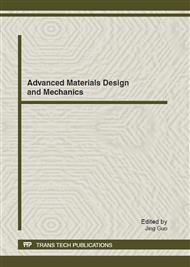p.320
p.324
p.328
p.335
p.339
p.343
p.347
p.352
p.356
Based on the Finite Element Method for Gear and Rack Research on Contact Fatigue Strength of Study
Abstract:
The paper summarizes gear experimental method of contract fatigue strength and the current status in domestic and overseas analyzes the experimental current situation, existing problems and the development trend; introduces the applications of finite element analysis used in contact fatigue strength calculation. On this basis, has given the finite element analysis method in the solution gear rack contact fatigue strength testing research measure and the mentality.
Info:
Periodical:
Pages:
339-342
Citation:
Online since:
September 2012
Authors:
Keywords:
Price:
Сopyright:
© 2012 Trans Tech Publications Ltd. All Rights Reserved
Share:
Citation:


